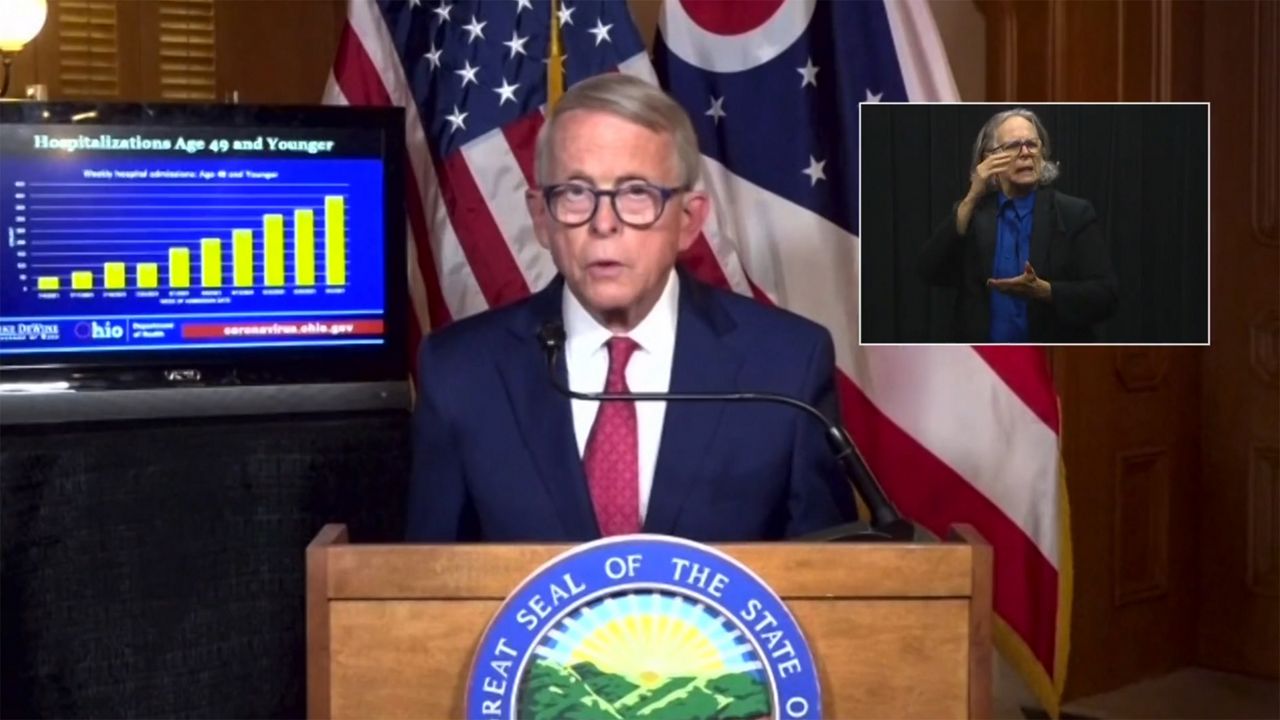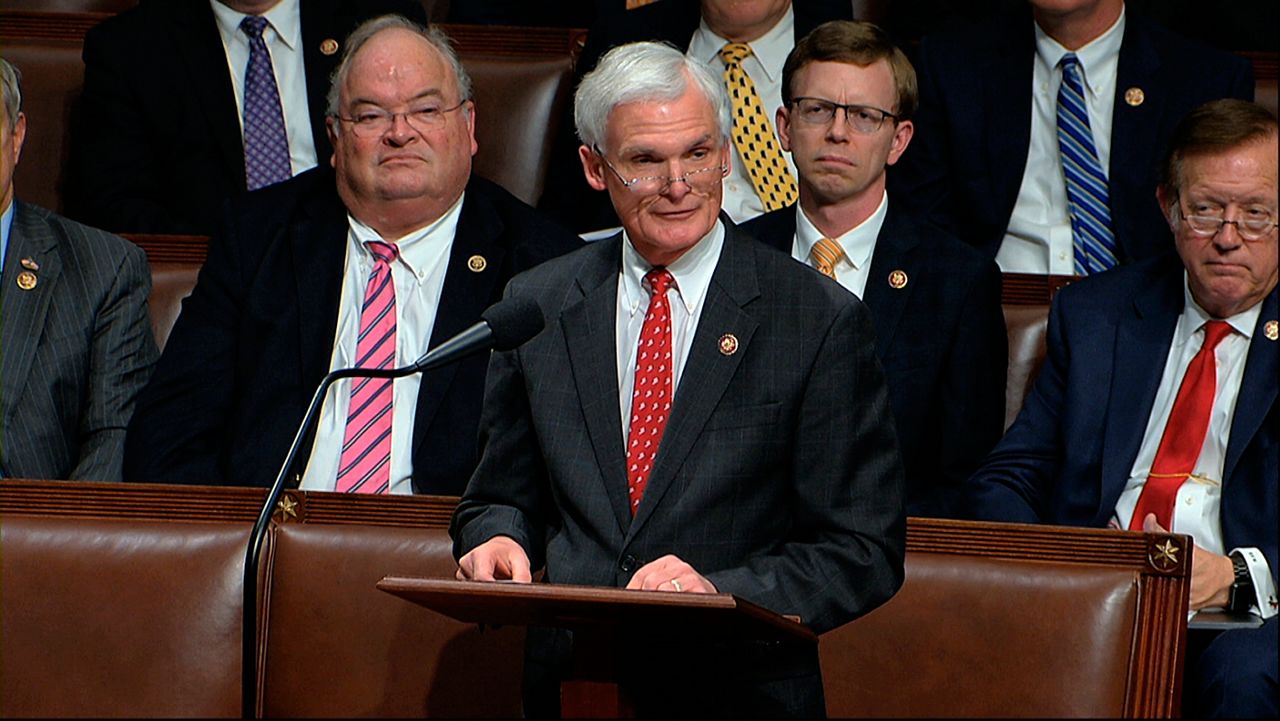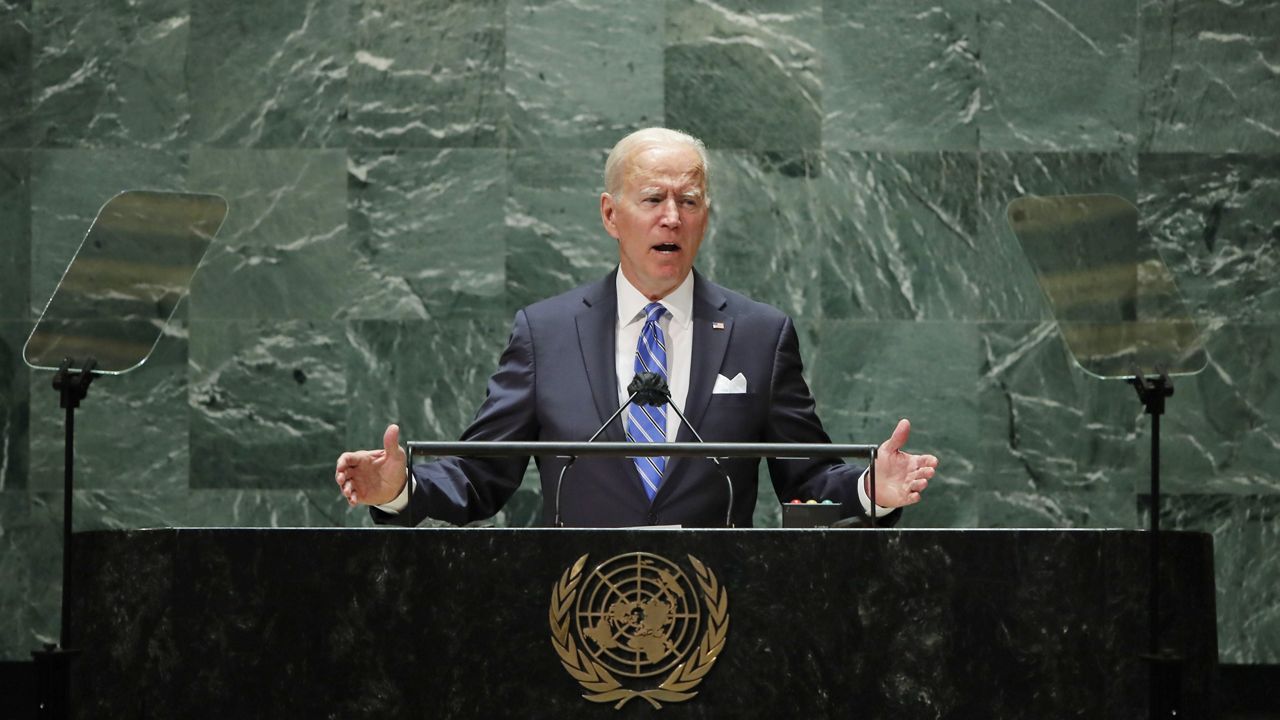COLUMBUS, Ohio — More residents of Ohio under age 50 are hospitalized with COVID-19 than at any previous point in the pandemic, Gov. Mike DeWine said Tuesday.
What You Need To Know
- Ohio reported 3,715 people were hospitalized with COVID-19 Tuesday
- Gov. Mike DeWine held a press conference with medical experts
- More young people are getting sick and becoming hospitalized, officials said
The governor was joined by Ohio Health Director Dr. Bruce Vanderhoff and frontline hospital workers during a news conference Tuesday, where officials warned that COVID-19 patients are filling intensive care units and emergency departments in the state.
“The problem is the delta variant. It is dangerous. It is driving our surge,” DeWine said. “The solution is not very complicated. The data is very clear — our solution is to have more people vaccinated.”
On Tuesday, 3,715 patients were hospitalized in Ohio, while 1,037 patients were receiving care in ICU beds.
Vanderhoff and DeWine said expanded vaccine authorization for children 5 and older will be an important step in taming the pandemic.
Pfizer and BioNTech said Monday that trial data shows their vaccine is safe and effective for children ages 5-11. The drug manufacturers said they are seeking expanded authorization for children.
Dr. Anthony Fauci, the White House chief medical adviser, told MSNBC Monday he is optimistic a vaccine will be available to children 5 and older before Halloween.
“It'll make a lot of families feel better,” DeWine said, noting that some of his grandchildren are among those who could become eligible.
State data continues to reveal that the virus is impacting young people more severely than in any previous period of the pandemic, DeWine said. During the week of Sept. 5, 398 people under age 50 were admitted to hospitals, which was a record.
University of Cincinnati Health’s Dr. Suzanne Bennett said intensive care units are full at her hospital. She said there is a waiting list of patients needing transfer to get care only available at large medical centers like UC Health.
“These rising numbers of sick COVID patients places a significant burden on our beds, our medical teams and worst yet, it creates scenarios that no one wants to think about where we do not have the space for patients who would otherwise benefit from receiving their care at these large academic medical centers,” she said.
Dr. Alan Rivera, a hospitalist at Fulton County Health Center, said part of the challenge is that COVID-19 patients can remain in a bed for 2-3 weeks, severely straining the limited resources at the small critical access hospital, which has a 15-bed emergency department.
“We need people that could potentially not require hospitalization to get vaccinated — protect yourself, protect your family, protect the community,” he said. “Vaccination is the best way we have to prevent further hospitalizations of COVID diagnosis so that we can help treat the community to the best we can with the minimal resources we have.”
The seven-day average for cases in the state was 6,771 on Tuesday. The Ohio Department of Health reported 340 COVID-19 deaths in the last week, according to Tuesday’s update. DeWine said 459 new COVID-19 hospitalizations were reported in the last day, the highest number since Jan. 12.
Due to high case levels in Ohio, Vanderhoff said residents who decline the vaccine are at high-risk during the current wave.
“If you're young and unvaccinated, it's now probably only a question of when, not if, you get COVID-19. And when you get it, without the protection of a vaccine there is a very real risk you'll end up in the hospital, or even in the obituary pages,” he said.






